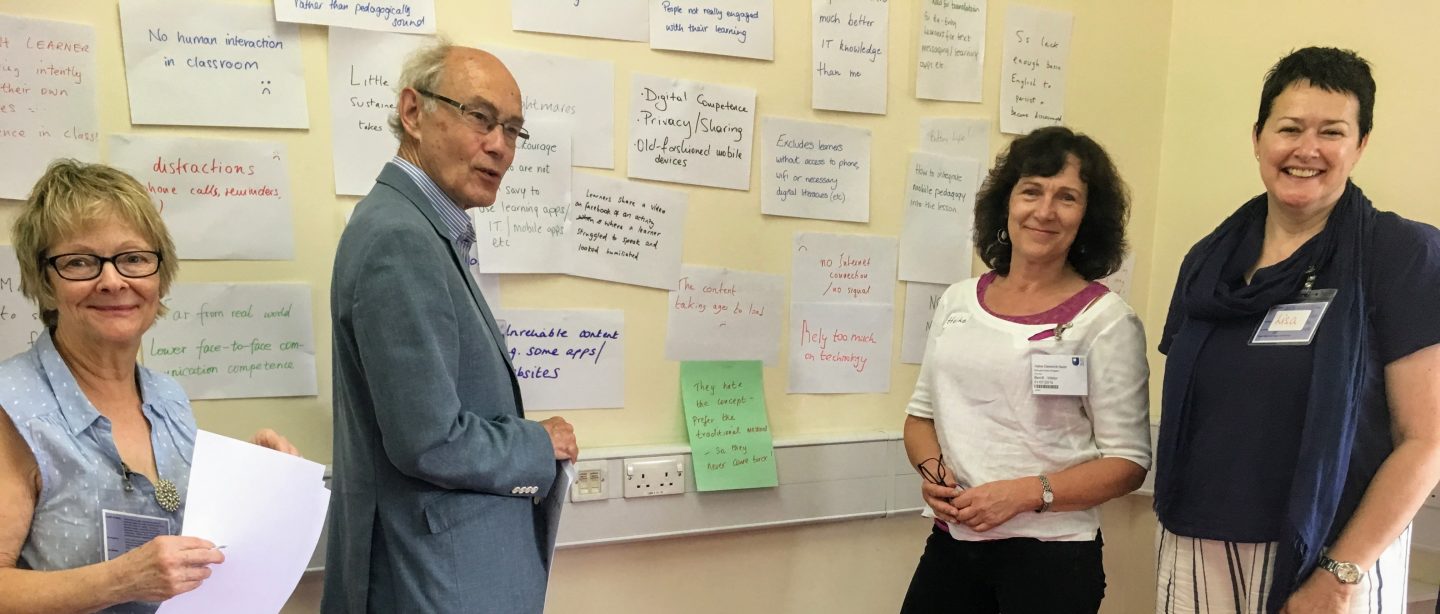This is a transcript of a conversation I had with Lisa Norman, an English teacher with Refugee Action, Kingston (London), at a workshop at the Open University on 1st July 2019 about Critical Mobile Pedagogies.
Lisa: In one of my lessons I wanted to use more technology, so I organised a treasure hunt in the Kingston town centre. One of our learning outcomes is to help learners know their local area, and to know the resources and systems in place, and so they had to photograph various things in the town centre, such as the bank opening and closing times. They had to find out how much a cafe latte cost in a coffee shop, and how much different fruit and vegetables cost at the local market. So they went to different shops and different places, and they had to photograph each of the items on the treasure hunt list. We then reviewed their photos in a coffee shop in a lesson outside the classroom, where students could show each other what they had photographed. There was an element of autonomy in terms of which banks or shops they had photographed. We did a paired speaking activity at the end of the lesson.
Gabi: Were there any challenges to overcome?
Lisa: It went generally to plan. I did a risk assessment before, and made sure we met up at three points along the path that I knew they were going to take, just to make sure that they were OK and they didn’t have any problems. I made sure I paired everybody with someone that was good at using cameras on their phones, so that nobody was left out and so that the technologically less able students were supported.
Gabi: How did the students respond?
Lisa: They really enjoyed it actually. I’m very keen to have student-led lessons, having just done my CELTA training, and I like to contextualise the learning and it complements the outcomes of the lesson that we’re working on. They really enjoyed being outside and walking around, and also making it very relevant to the students because it’s where they live, and where they spend their time.
Gabi: What value did the mobile devices add? Was it just the novelty value or did the use of mobile phones add something to the learning?
Lisa: A bit of both really. I wanted to bring in a bit of technology to my lesson, so I worked out how I could do it. Working for a charity there aren’t that many opportunities because of the lack of funding and resources. Also, I teach pre-Elementary (level), so to get them to describe a bank or a coffee shop or a market is quite challenging, because their vocabulary is so limited. This was something very practical and tangible that they could do and it made them feel more involved in the lesson.
Gabi: Thank you for sharing this great lesson idea!

